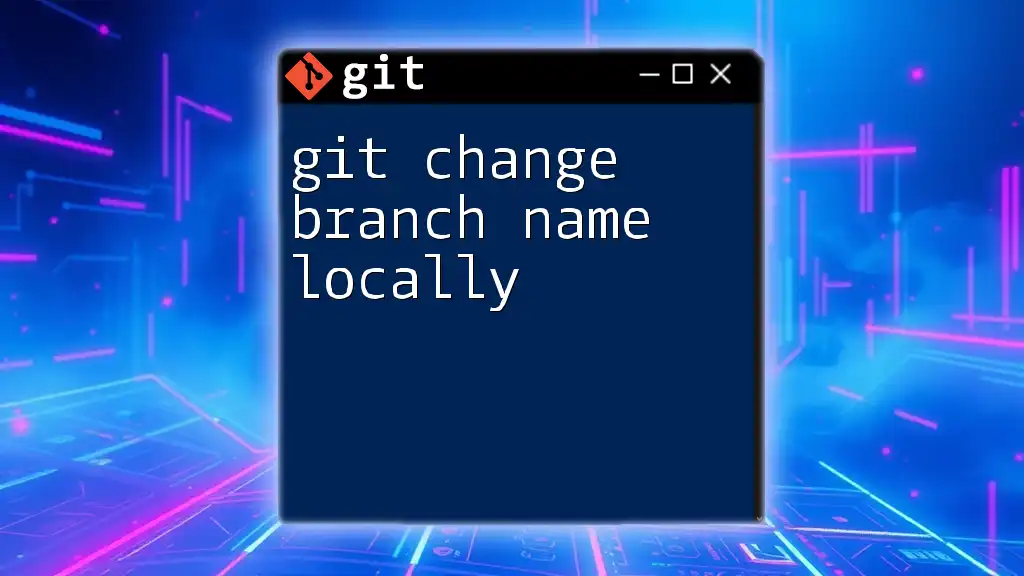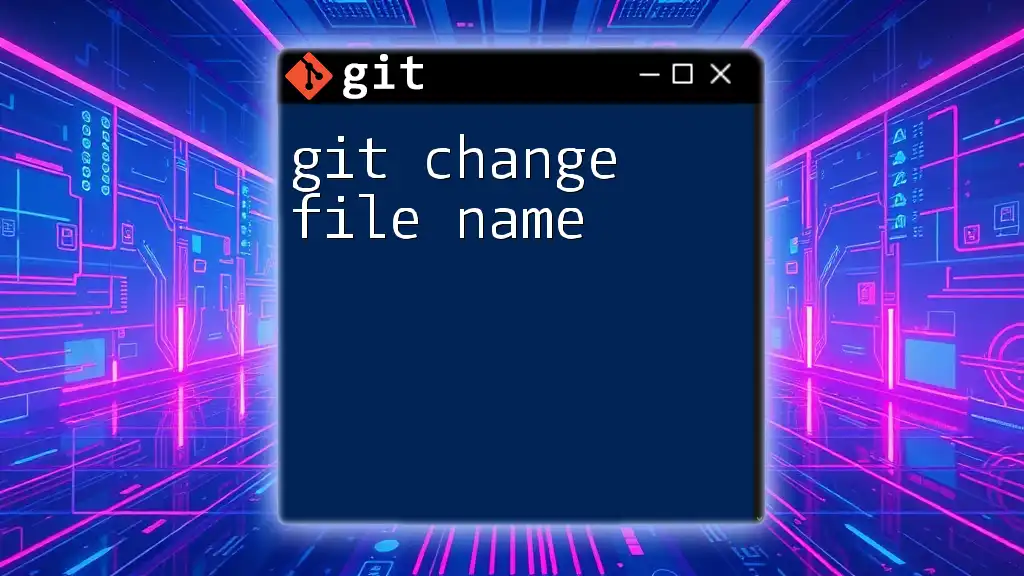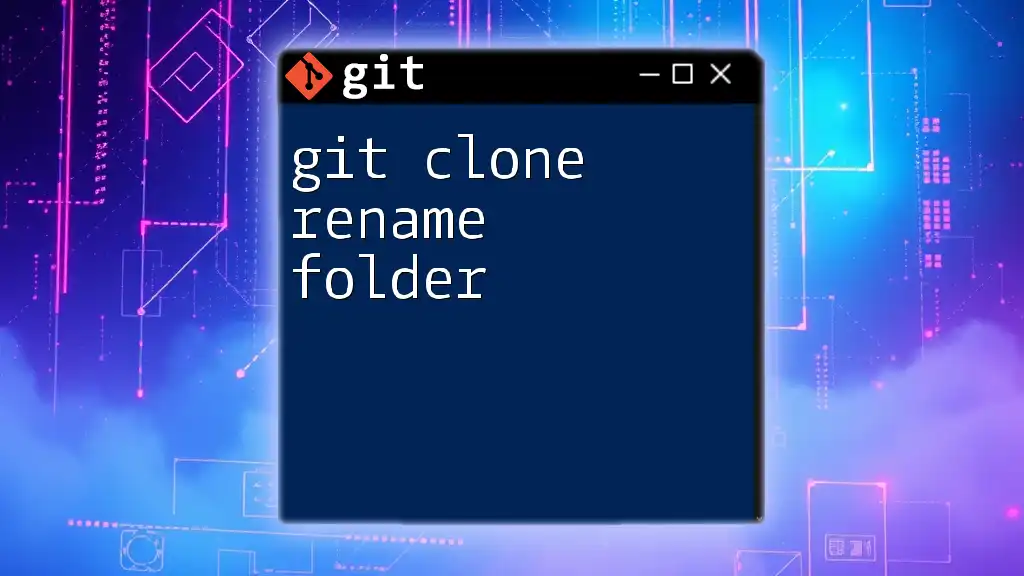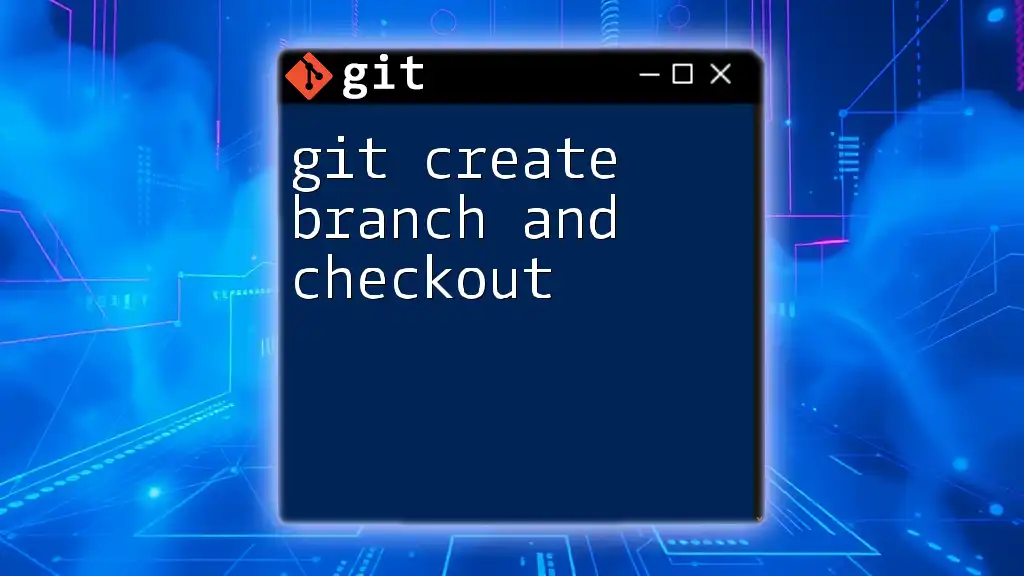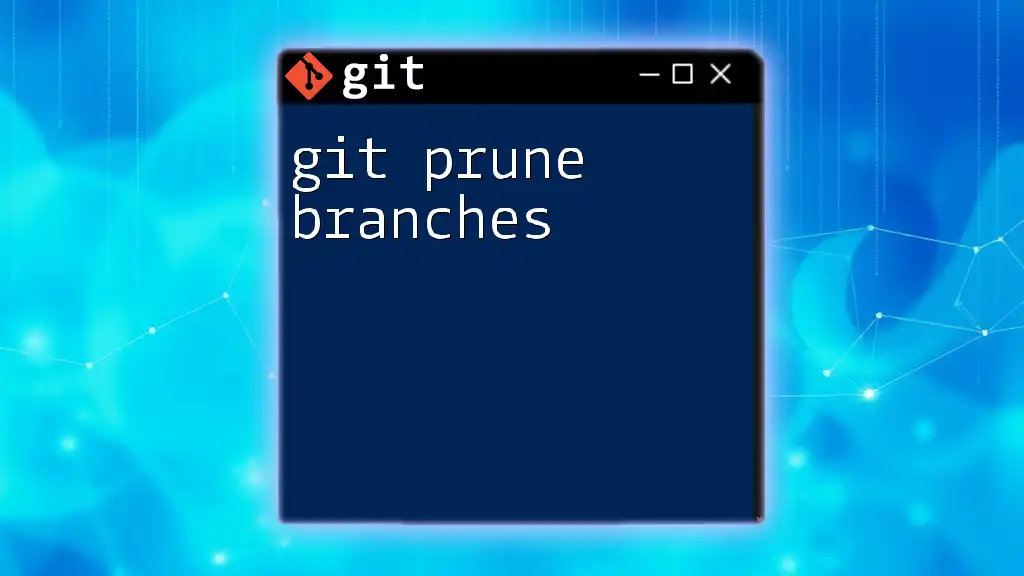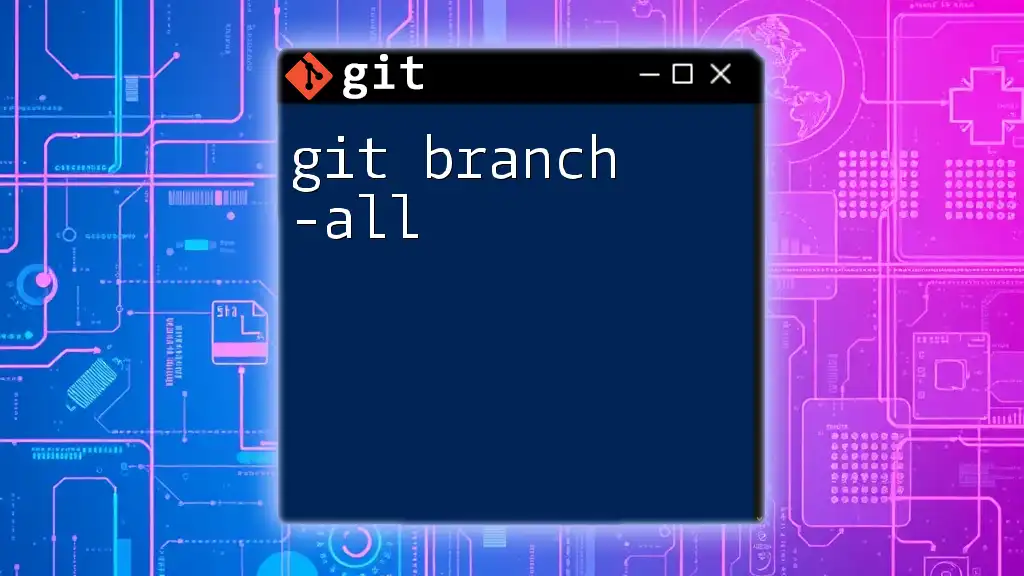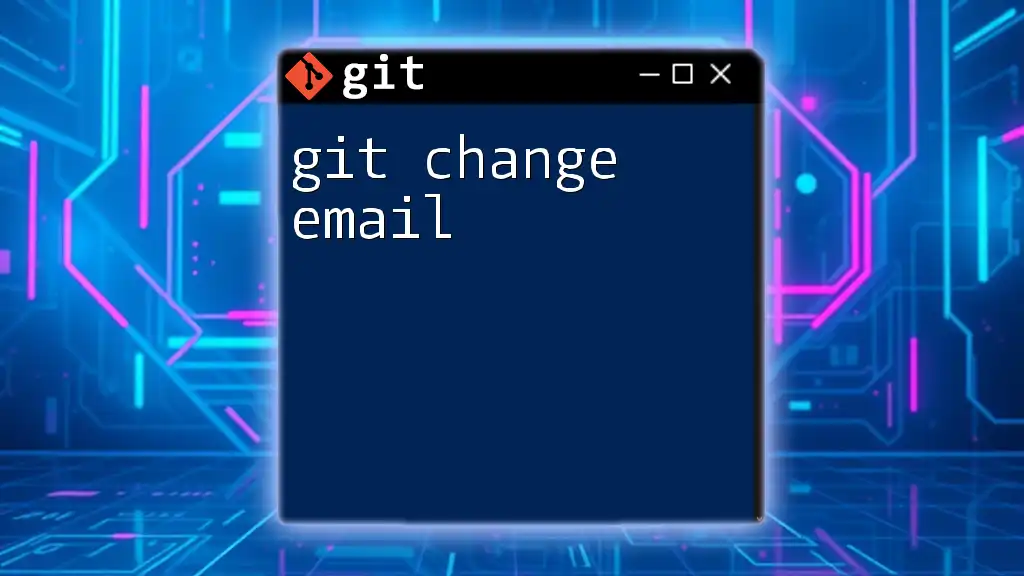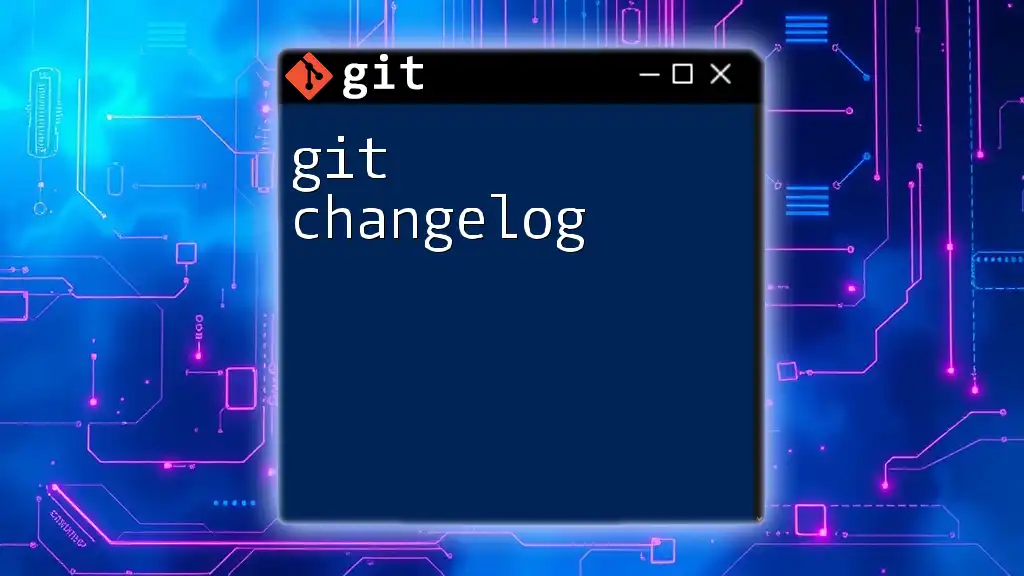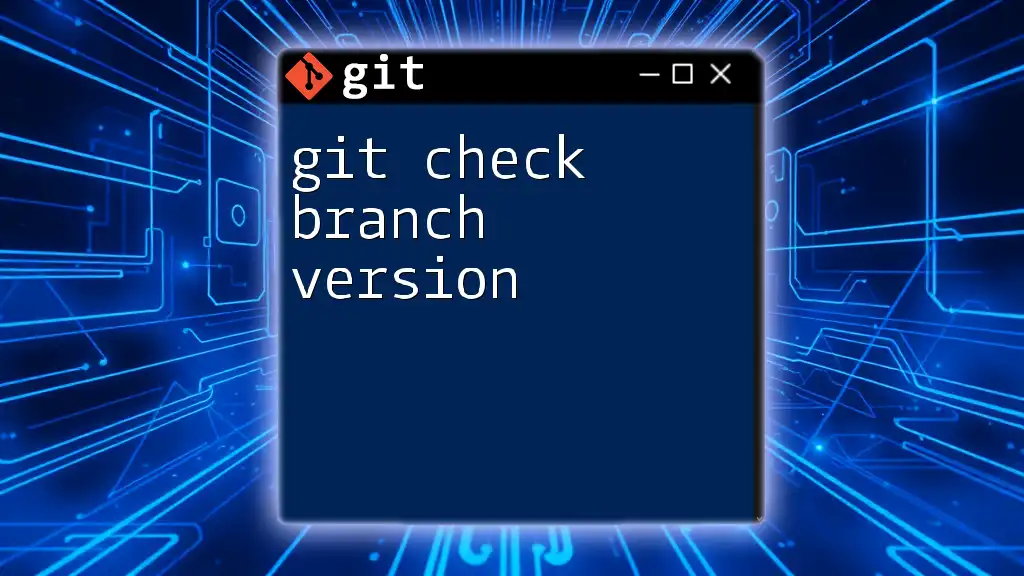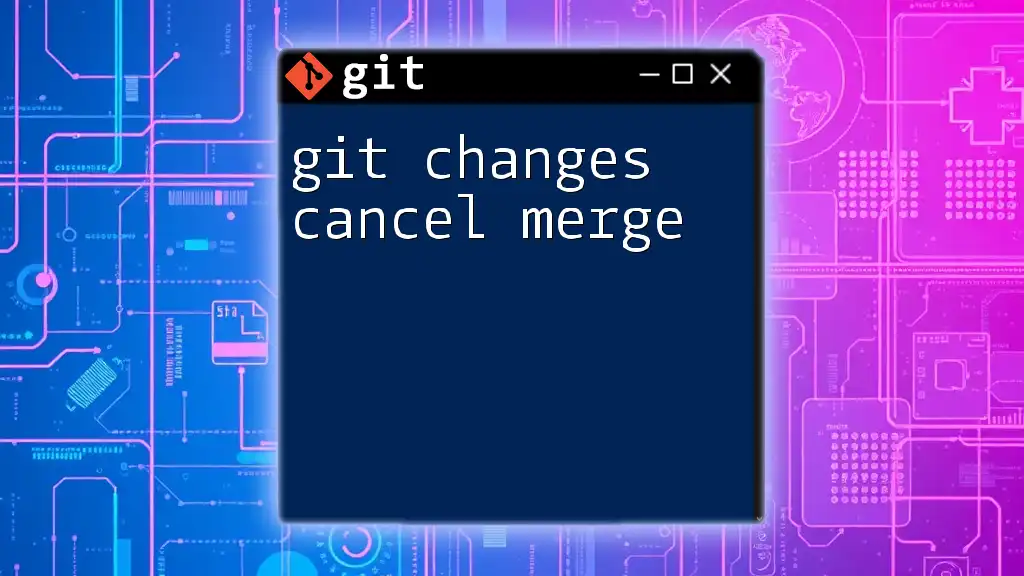To change a branch name locally in Git, you can use the following command, replacing `old-branch-name` with your current branch name and `new-branch-name` with your desired new name:
git branch -m old-branch-name new-branch-name
Understanding Branches in Git
What is a Git Branch?
In Git, a branch serves as a separate line of development in your project. Essentially, branches allow you to diverge from the main line of work, enabling you to develop features or resolve issues independently. When you create a branch, you're making a copy of the project's current state at that moment. This setup allows multiple developers to work on different features or bug fixes without interfering with each other's progress.
The Role of Branch Names
Branch names play a crucial role in collaboration. Meaningful names help team members quickly understand the purpose of a branch. By adhering to a standard naming convention, you can ensure clarity and prevent confusion in your workflow. For instance, a branch named `feature/login-system` immediately tells contributors what to expect.

Checking Your Current Branch
How to Identify Your Current Branch
To determine which branch you are currently working on, you can use the following command:
git branch
The active branch will be highlighted with an asterisk (*). This output helps clarify your current working context and enables you to plan your next steps, especially when considering a branch name change.
Best Practices for Managing Branch Names
When it comes to branch names, clarity is key. Strive to choose names that accurately reflect the nature of the work. Consider the following elements when naming branches:
- Use lowercase letters: This ensures consistency and readability.
- Descriptive phrases: Opt for names that indicate the purpose (e.g., `bugfix/header-issue`).
- Include issue or ticket numbers: If applicable, referencing a ticket can create a direct context (e.g., `feature/123-payment-integration`).
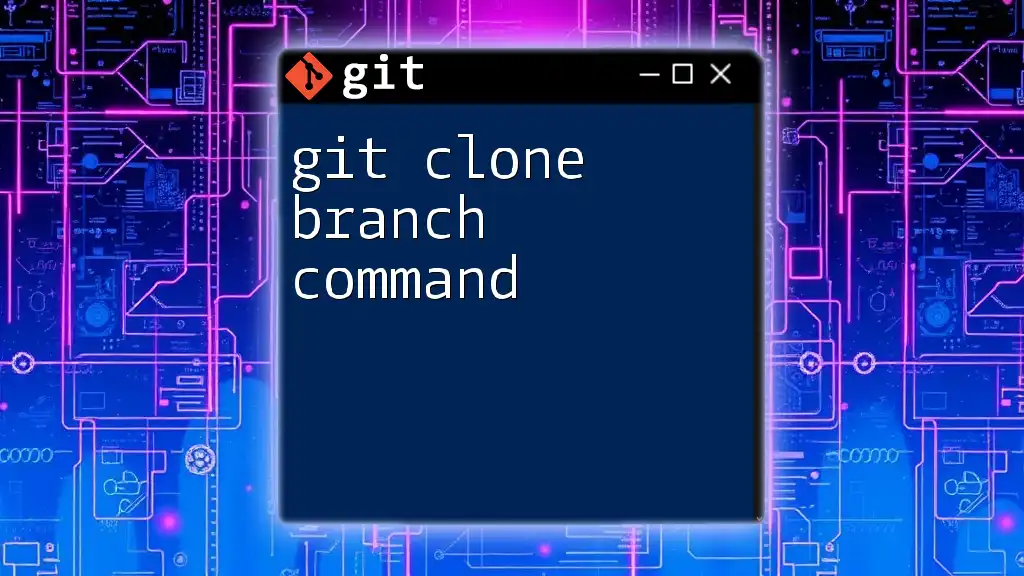
Changing a Branch Name Locally
Steps to Rename a Git Branch
Renaming the Current Branch
If you want to change the name of the branch you are currently on, use the following command:
git branch -m <new-branch-name>
For example, if you are on a branch named `feature/old-name` and want to rename it to `feature/new-name`, you would execute:
git branch -m feature/new-name
This command is straightforward; it updates the branch name directly without needing to checkout or switch branches.
Renaming a Different Branch
To rename a branch that you are not currently on, use the command in the format:
git branch -m <old-branch-name> <new-branch-name>
For instance, if you wish to rename `feature/another-old-name` to `feature/another-new-name`, you would run:
git branch -m feature/another-old-name feature/another-new-name
This approach ensures that you can modify any branch name at any time, enhancing your project’s organization.
Verifying the Branch Name Change
After renaming a branch, confirming that the change was successful is essential. To do this, you can run the `git branch` command again:
git branch
This command will show you the list of branches, allowing you to check for the new branch name. If the change was executed correctly, you should see the updated name listed.

Common Issues and Troubleshooting
Error Messages
While changing a branch name may seem simple, you may encounter certain error messages. Common errors include:
- Branch does not exist: This occurs if the old branch name was misspelled or does not exist.
- You are on the branch you are trying to rename: You can’t rename the branch while checked out on it unless using the `-m` flag without specifying the old name.
In such cases, double-check your command syntax and ensure you’re on the right branch before renaming.
Conflicts with Remote Branches
Understanding the difference between local and remote branches is vital. Renaming a local branch does not automatically rename your remote counterpart. If others are working with the remote branch, conflicts can arise.
To prevent issues:
- Before renaming, inform your team to avoid confusion.
- After local renaming, if you want the remote branch to match, you’ll need to delete the remote branch and push the new one. This can be done with the following commands:
git push origin :<old-branch-name>
git push origin <new-branch-name>
However, exercise caution, as deleting a remote branch may impact other team members.
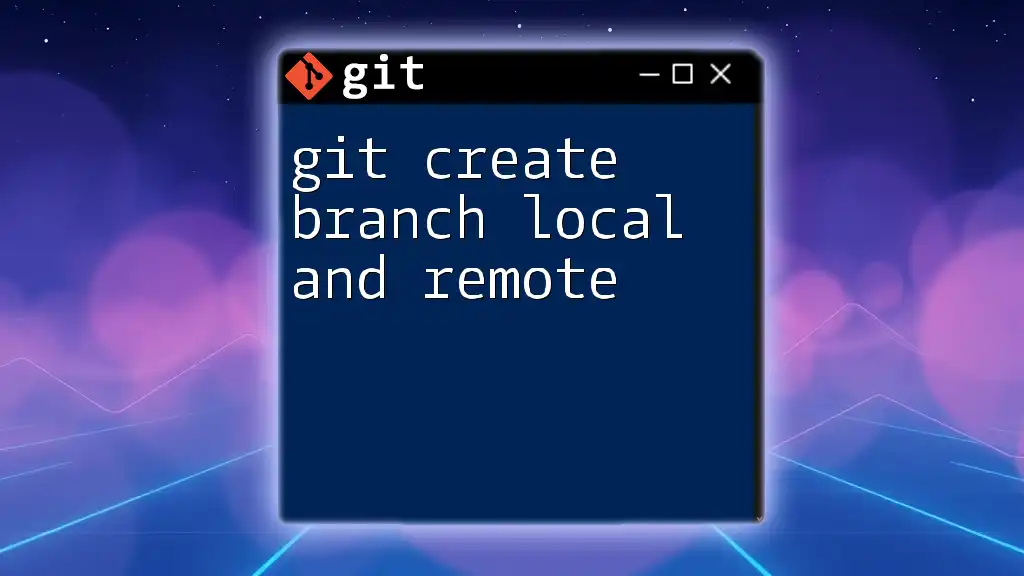
Best Practices for Branch Management
Naming Conventions to Adopt
Implementing a standardized naming convention is beneficial for the entire team. Here are a few strategies to consider:
- Use prefixes to categorize branch types, such as `feature/`, `bugfix/`, and `hotfix/`.
- Consider establishing a suffix that indicates the status, like `in-progress` or `ready-for-review`.
When to Rename Branches
Renaming branches might be necessary if:
- A branch's purpose changes significantly during development.
- The branch name no longer aligns with its content after further discussion or planning.
Regularly assessing and renaming branches can help maintain clarity and coherence within your project.
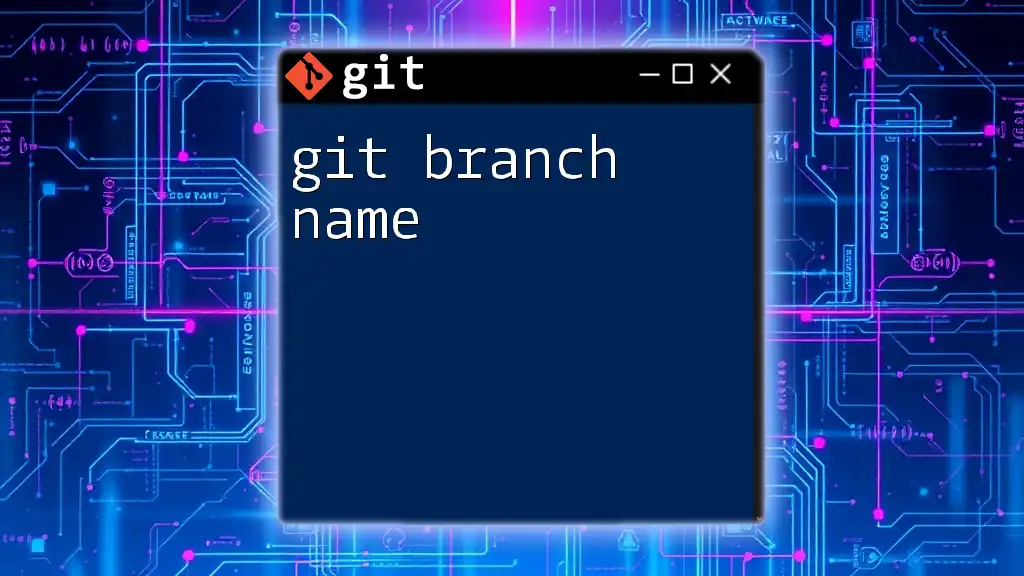
Conclusion
Properly managing branch names in Git is essential for effective collaboration and organization. By following the methods outlined in this guide for git change branch name locally, you not only streamline your workflow but also contribute to a more effective and communicative development process. Implementing proper naming conventions and being mindful when performing branch operations ensures a smoother experience for you and your team.

Additional Resources
For further exploration, consult the official Git documentation or delve into additional tools and resources that can assist with Git management. Stay connected with the community for shared knowledge and discussions; your mastery in using Git commands, including changing branch names, is just the beginning!

